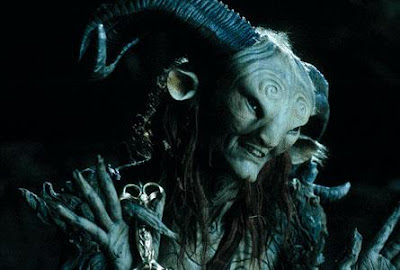
"One person's crazyness is another person's reality."
Tim Burton, born in Burbank August 25, 1958 , often describes his childhood self as quirky, self-absorbed and highly imaginative. From an early age he watched horror and low budget films in order to escape from reality. As a teen growing up in Burbank, he staged an axe murder with his brother to scare the neighbours, prompting one to call the police, and this is how he got a nickname, 'Axe Wound'.
On occasion Burton has mentioned the "weirdness" of growing up in close proximity to Valhalla Cemetery in Burbank.After high school, he won a Disney scholarship to attend the California Institute of the Arts
in Valencia, California
. After his first job working as a cell painter on Ralph Bakshi's Lord of the Rings, Burton was hired by the Walt Disney Studios as an animator apprentice. Burton was dissatisfied with the artistic direction of 'The Fox and the Hound', Disney refused Burton's character designs, commenting on the fact they were in opposition to Disney's desires, "look like roadkill'.
In 1982, Burton made his first short, Vincent 5:52 min. black and white stop-motion film based around a poem he wrote, depicting a young boy who fantasizes that he is his (and Burton's) screen idol Vincent Price, with Price himself providing narration.Burton's girlfriend at the time produced the short, She was an executive at Disney. During production, Burton maintained an office at The Disney Studios.they also worked together to co-authored a screenplay titled "True Love."

The protagonist being the young boy Vincent, Burton styled on himself. the animation follows Vincent, in what looks like, 'a day in the life of Vincent Malloy'. But its much more than that. clever use of lighting and the stop motion frame rate, Burton switches between reality and the boy's corrupt imagination, where he believes himself to be Vincent Price.
“I've always been more comfortable making my decisions from the subconscious level, or more emotionally, because I find it is more truthful to me, Intellectually, I don't think like that because I get uncomfortable. I'm more wary of my intellectual mind, of becoming delusional if I think of it too much.”
critics found similarities between Vincent and The Cabinet of Dr. Caligari, Burton says the film "just happens to be shot in black and white, and there's a Vincent Price/Gothic kind of thing that makes it feel that way. . . .I think it probably has more to do with being inspired by Dr. Seuss. . . The rhythm of his stuff spoke to me very clearly. Dr. Seuss's books were perfect: right number of words, the right rhythm, great subversive stories."
The film noir style supports the sinister and bizarre narrative. the connotations lead me to believe that Burton is relating back to his own childhood, and how he used to cause mischief pretending to be in a horror film. i am captivated by this animation, especially when the character's imagination pushes reality aside, then seemingly twists and contorts the innocents of the boys subconscious. It all seems to be a dream, this is portrayed by the clever transitions between Vincent's imagination and reality.
In order to show the corruption and the disintegration of the young child's mind the imagination world is constantly covered in darkness. Twisted, bizarre shapes and experimental camera angles capture this well. I have noticed that in the reality, camera angles rarely strays from a long shot, this distances the audience from Vincent as a character.To keep the focus on Vincent, Burton doesn' t allow the viewer to connect with the transient charaters, this is achievable as there are no frames containing any close ups only long and over shoulder shots, all seen from the perspective of Vincent.When in the form of Vincent Price, the range of camera angles expands in order to capture every subtle movement and tiny detail. In my opinion i feel as if Tim Burton wants us as an audience to connect with the subconscious world.












